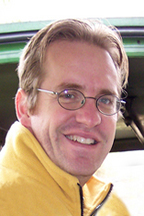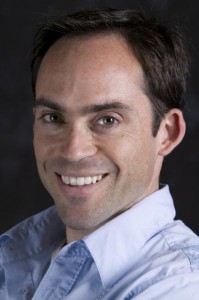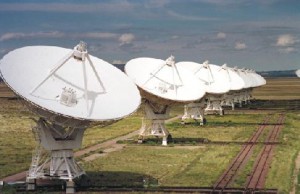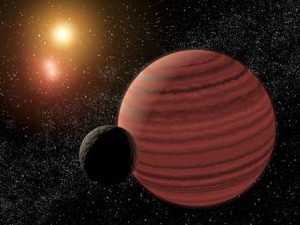Below are the projects and mentors available for participating Morehouse & Spelman students, covering the following topics:
- Experimental Material Sciences: Profs. Averitt & Palacci
- Experimental Astro/High Energy Physics: Prof. Ni
- Observational Astrophysics: Prof. Burgasser and Dr. Melis
 Characterizing Artificial & Quantum-based Materials
Characterizing Artificial & Quantum-based Materials
Prof. Richard Averitt (Experimental Condensed Matter Physics)
Project Description: Prof. Averitt is seeking a research student to physically characterize artificial metamaterials and quantum materials (superconductors, ferromagnets, etc.) using novel optical spectroscopic approaches. You will learn to use advanced optical spectroscopic experimental techniques used to characterize new materials, and the solid-state physics that describes them.
Requirements: Students should have completed at least an introductory E&M course (junior standing preferred), and some experience with optics is preferred but not required.
 Brief Biography: Prof. Averitt uses advanced experimental techniques, including time-resolved spectroscopy from the far-infrared to the visible, to characterize the fundamental and technologically relevant properties of interesting materials, such as artificial (metamaterial) and quantum-based materials. His lab also designs, fabricates, and characterizes artificial materials.
Brief Biography: Prof. Averitt uses advanced experimental techniques, including time-resolved spectroscopy from the far-infrared to the visible, to characterize the fundamental and technologically relevant properties of interesting materials, such as artificial (metamaterial) and quantum-based materials. His lab also designs, fabricates, and characterizes artificial materials.
Webpage: http://physics.bu.edu/averittlab/
Prof. Adam Burgasser (Observational Astrophysics)
Project Description: Prof. Burgasser is seeking 1-2 research students to work on the SpeX Prism Library Analysis Toolkit (SPLAT), developing analysis tools to investigate low-resolution near-infrared spectra of cool brown dwarfs. You will learn how to reduce and analyze astronomical spectral data, and develop software in Python to search for and characterize rare populations, including metal-poor subdwarfs, young planetary-mass brown dwarfs, and spectral binaries.
Requirements: Some programming experience (Python preferred but not required); completion of Mechanics and E&M courses; some experience/knowledge of optics preferred but not required.
 Brief Biography: Prof. Burgasser’s research is observational astrophysics, focusing on the atmospheres and physics properties of the lowest-mass stars, brown dwarfs and extrasolar planets. His tools include optical and near-infrared spectroscopy, photometric and spectroscopic monitoring, high-resolution imaging, and radio interferometry.
Brief Biography: Prof. Burgasser’s research is observational astrophysics, focusing on the atmospheres and physics properties of the lowest-mass stars, brown dwarfs and extrasolar planets. His tools include optical and near-infrared spectroscopy, photometric and spectroscopic monitoring, high-resolution imaging, and radio interferometry.
Webpage: http://coolstarlab.org
 Radio Astrometry and Variability of Nearby Stars
Radio Astrometry and Variability of Nearby Stars
Dr. Carl Melis (Observational Astrophysics)
Project Description: Dr. Melis is seeking a research student to analyze radio inferometry data of low mass stars observed with the Very Large Array and Very Large Baseline Array, to investigate variability associated with magnetic fields and to make ultraprecise (µarcsecond) astrometric measurements for distances and binary orbit determinations. You will learn about magnetic activity and radio generation in cool stars, the radio interferometry technique, and how to interpret radio data using electromagnetic physics principles.
 Brief Biography: Dr. Melis is a research scientist at UCSD whose research focuses on the birth, life, death, and re-birth of planetary systems with an emphasis on terrestrial (Earth-like) planets. He uses radio interferometry to study disks and magnetic activity around cool stars, and for precision astrometry.
Brief Biography: Dr. Melis is a research scientist at UCSD whose research focuses on the birth, life, death, and re-birth of planetary systems with an emphasis on terrestrial (Earth-like) planets. He uses radio interferometry to study disks and magnetic activity around cool stars, and for precision astrometry.
Webpage: http://cass.ucsd.edu/~cmelis/index.shtml
 Search for the Dark Matter Particle
Search for the Dark Matter Particle
Prof. Kaixuan Ni (Experimental Cosmology/High Energy Physics)
Project Description:
Abundant cosmological evidence indicates that the matter content of the Universe is dominated by dark matter, which so far is only detected through their gravitational effect. Whether dark matter interacts with the visible part of the Universe besides gravity is still a mystery in modern physics. The upcoming XENON1T experiment is the largest dark matter search experiment using 3.5 ton of ultra-pure liquid xenon at Gran Sasso Underground Laboratory in Italy.
Student researchers will have an opportunity to learn about the dark matter problem, build parts of the detector system, and develop analysis tools to search for dark matter using XENON1T. The students will develop algorithms and software techniques to sort out signals from background and noises in waveforms from the detector for both calibration and dark matter search data; develop experimental techniques to achieve and analyze ultra-low background and ultra-pure operation condition of the dark matter experiment.
Requirements: Prior programming and laboratory experience required.
 Brief Biography: Prof. Ni studies physics beyond the Standard Model through particle detection experimentation. He is a member of the XENON collaboration, which aims to detect the elusive dark matter particle. He also investigates the use of noble liquid detectors for neutrinoless double beta decay, proton decay, Solar neutrino physics and gamma ray imaging.
Brief Biography: Prof. Ni studies physics beyond the Standard Model through particle detection experimentation. He is a member of the XENON collaboration, which aims to detect the elusive dark matter particle. He also investigates the use of noble liquid detectors for neutrinoless double beta decay, proton decay, Solar neutrino physics and gamma ray imaging.
Webpage: http://nigroup.ucsd.edu
 Self-assembly of micromachines
Self-assembly of micromachines
Prof. Jeremie Palacci (Experimental Condensed Matter Physics)
Project Description: The Palacci group studies the building and self-assembly of micromachines — the size of a cell– into an even bigger structure using tailored particles extracting their energy from their environment. We aim at using such system for a variety of tasks: color changing soft skins or microstructures, which fold like origamis into programmed shapes.
We seek a student to explore one of those opportunities. The project is experimental and the trainee will learn cutting-edge techniques of microscopy, microfabrication and colloidal science
Requirements: Students should have completed at least an introductory E&M course (junior standing preferred).
 Brief Biography: The Palacci Lab studies soft condensed matter physics, including active colloids, self-organization, and non-equilibrium systems.
Brief Biography: The Palacci Lab studies soft condensed matter physics, including active colloids, self-organization, and non-equilibrium systems.
Webpage: http://palaccilab.ucsd.edu/


